Ogórki Kiszone
Kiszone: Polish Dill Pickles in Brine (Full Sour)
How to pronounce it?
ogur-key key-shoneh
‘Play’ to hear:
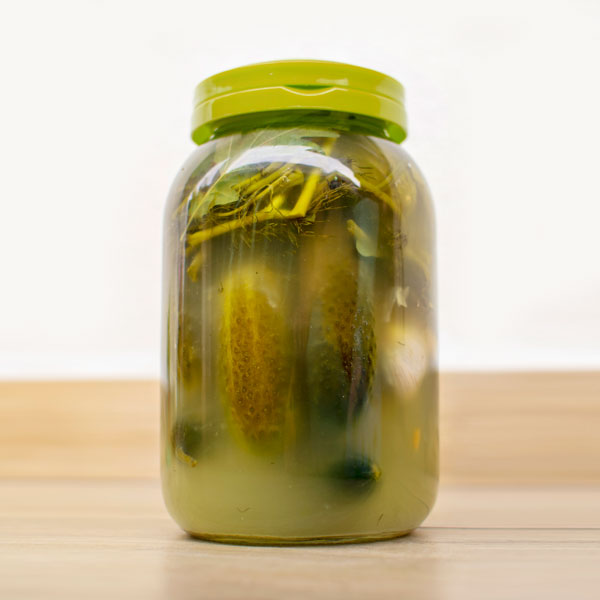
Wait, am I about to admit that as a 30-something Pole (born & bread) I never fermented any cucumbers whatsoever?
Yikes. But there it is.
In my defence, I’m a keen consumer of these crunchy & delicious pickles aged in brine. Buying quite a lot of that stuff, one might think I’m addicted.
Why buy ready-made then? – you may ask.
Good question.
Well, for some reason I always thought it’s a rather difficult art (or – science, or – perhaps both?), better left in the experienced hands of professionals.
But recently my mind was changed, and I’ll tell you why you should give it a go yourself.
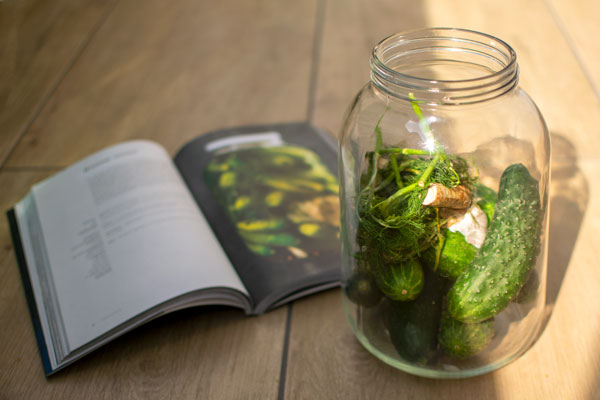
Homemade Pickles: Is It Worth It?
There are a few reasons why it is!:
- The quality of a store-bought ogórki kiszone can differ significantly. Why risk buying some dodgy ones, when we can make them properly at home? That way you’ll know for sure what’s inside the jar.
- The whole process is EASY. Or at least that’s what they claimed on the “Food Network” (the Polish edition) last night ????.
- So far, I can confirm – cucumbers in brine ARE easy to prepare.
But please bear with me for another 2 weeks to see if the results are actually edible ????. And the results were great the first time around!
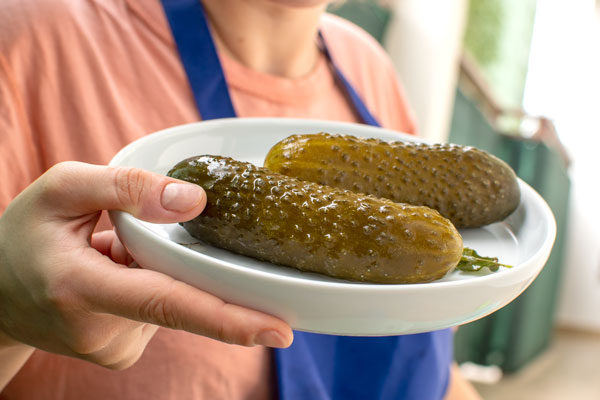
- There is massive hype around the world about all-things-fermented. And no wonder, they’re a superfood. Your gut will thank you for consuming them.
- It’s worth remembering that the Polish folk were (and still are) total fermentation experts for CENTURIES. This is how we roll! If you’re of Polish descent (or simply wanna emulate our awesome Slavic style ????), just give it a go!
Polish Dill Pickles How-To’s
Before my first attempt, I equipped myself with a book by an expert – a well known Polish chef Aleksander Baron. In his book “Kiszonki i Fermentacje” (“Pickling and Fermentation”), he presents an array of recipes for all things pickled. The photos in the book look promising, so I’ve decided to give this method a try.
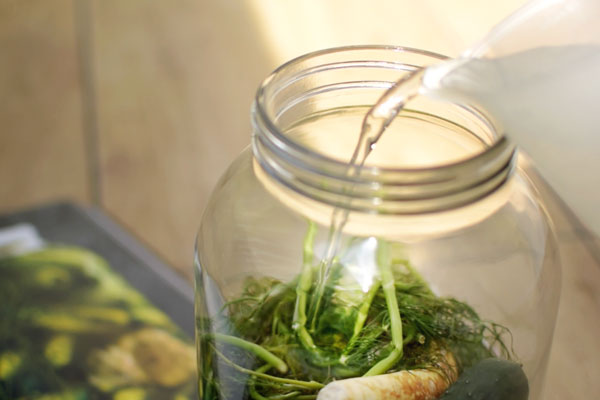
I cannot post any FAQs (Frequently Asked Questions), since I have more Q’s than A’s at this point… But the key pointers are:
- To pickle cucumbers, use common rock salt. It has tons of minerals, which enrich the brine and promote better fermentation. Avoid iodised salt and salt with anti-caking agents.
- It’s best to place the cucumbers tightly, under a slight slant, in layers.
- And lastly – a touch of sugar helps too, it maximally prolongs the period of proper fermentation.
1 to 2% of sugar (or honey) in the brine is enough to amp up the production of lactic acid.
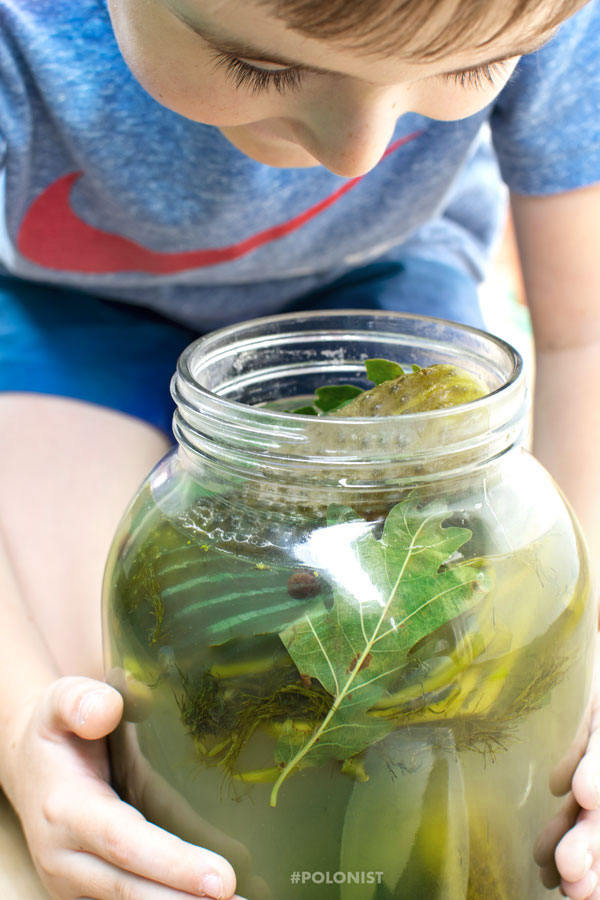
Ogórki Kiszone: Polish Dill Pickles in Brine
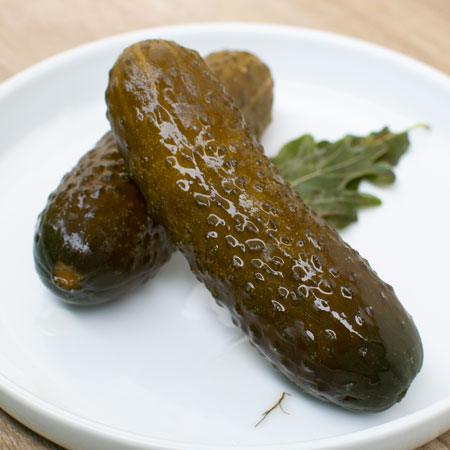
Ingredients
- 6.6 lb (3 kg) cucumbers (small, short & bumpy kind)
- 0.5 gallon (2 litre) water
- 5-6 tbsp (80-100g) common salt (non-iodized!)
- 4 horseradish leaves (optional)
- 4 stems fresh dill (with seeds)
- 6 oak leaves
- 10 cherry tree leaves
- 1 horseradish root
- 1-2 heads of garlic
- 1 tbsp honey (optional)
Instructions
- Boil water with salt, leave aside to cool completely.
- Place cucumbers, leaves, horseradish root, garlic and honey into a large jar.
- Pour in the water.
- Cover with a lid. The author recommends using a fermentation lid (such as this one), but I used a regular lid and it worked just fine.
- Set aside and... wait.
- You can start tasting them after 3 days or so. But for a proper dill pickle in brine, you'll need to wait longer.
- For the first 2 weeks, cucumbers should be stored at room temperature, then transferred to a cool place to slow down the fermentation process. Ideally, pickles should be stored at a temperature of about 50°F (10°C), in a cool pantry or a basement.
Notes
- This recipe is adapted from Aleksander Baron's cookbook "Kiszonki i Fermentacje" Pub. Pascal, 2016, p.86
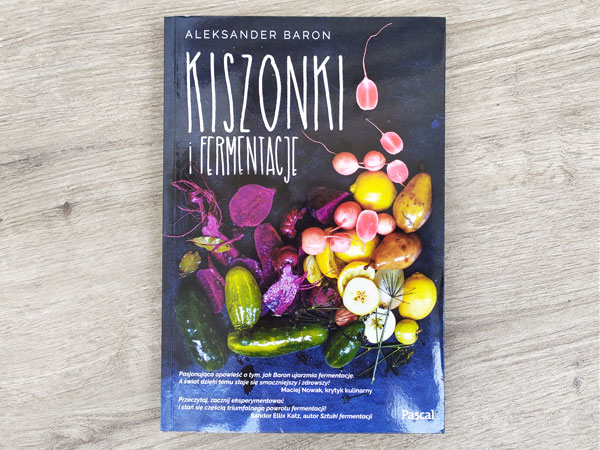
- The fermentation tips & trick I've found at Lokalny Rolnik (an article in Polish).
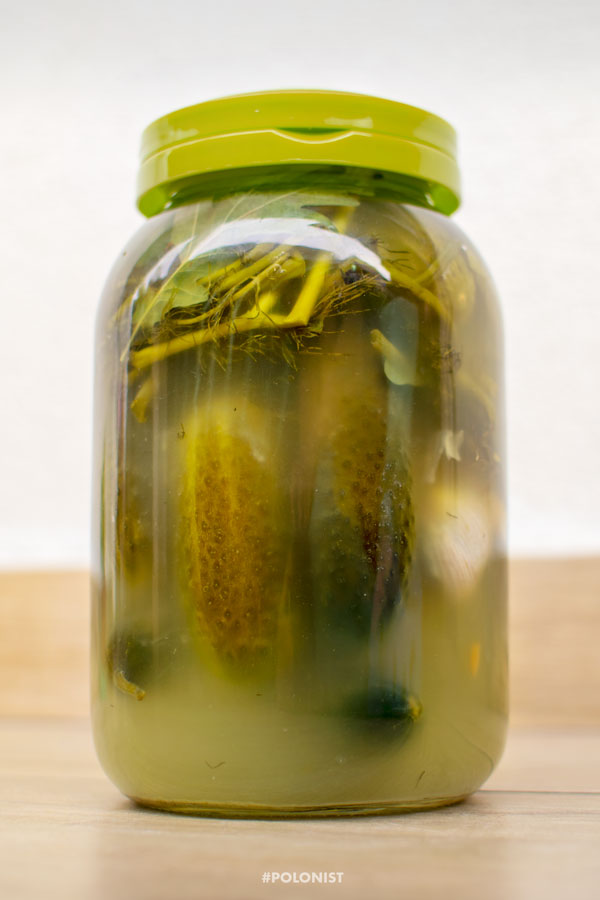
Polonist is reader-supported. When you buy through links on our site, we may earn a small affiliate commission. Learn more
Recipe Information
Filed under:
Alternative traditional/regional names:
Ogórki Kwaszone
Also known / Misspelt internationally as:
Kiszeniaki, Full Sour Pickles, Fermented Cucumbers
Tested by:
First published on:
Recipe by / Adapted from:
This recipe is adapted from Aleksander Baron’s cookbook “Kiszonki i Fermentacje” Published by Pascal, 2016, p.86
Story by:
Bibliography / References: